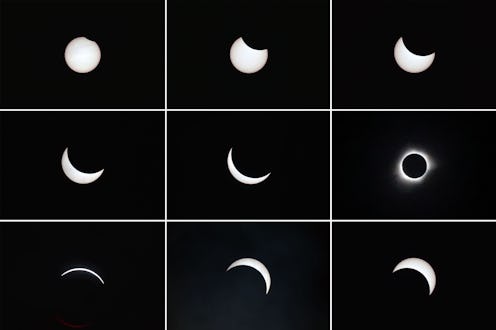
With the solar eclipse cutting a path across most of the United States, you might be wondering: What time is the 2017 solar eclipse? Because the Sun, Earth, and Moon are all moving — and traveling at different speeds — the solar eclipse will be visible at different times, and for different amounts of time, in each location. If you want to check the exact time and duration of the Aug. 21 solar eclipse in your location, Time and Date has tool on its website that can help.
The Eclipse Data Tool will automatically determine your location (if you have location services turned on on your phone, tablet, or computer), and let you know whether you'll be viewing a total or partial eclipse, the time it starts, the best time to view it, and when it ends. For example, I live in Los Angeles, and I will see a partial eclipse. The partial eclipse begins in L.A. at 9:05 a.m. Pacific Time. The best viewing time is at 10:21 a.m., and the eclipse will be finished by 11:44 a.m.
You can also use Wolfram Precision Eclipse Computation, which can let you know the exact time the eclipse will be traveling across your area to within a few seconds by geo-tagging your location.
The actual part of the eclipse where the new Moon's shadow passes in front of the Sun only lasts a few minutes, even in the path of totality. "This brevity is rooted in the movement of the dark shadow of the Moon known as the umbra, for when you are inside the umbra, the entire solar disk of the Sun appears to be covered by the dark disk of the Moon," Joe Rao explained for Space.com.
Despite this celestial affair lasting just mere minutes, it can still have a pretty big effect on your environment. "In fact, you might be forgiven for thinking you're on another planet or moon: For a short time, Earth will be as dim as farther-out worlds in the solar system," noted Dave Mosher for Business Insider.
While sudden darkness in the middle of the day might feel startling and strange, it's all totally normal as far as eclipses go. But, if you ever wondered what it might look like to live on another planet, those few minutes could give you a pretty good idea what life looks like in a galaxy far, far away.